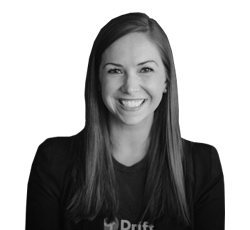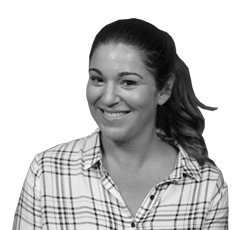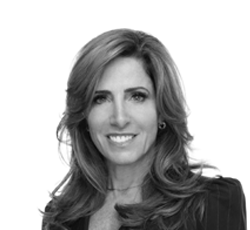How KeepTruckin keeps a near-perfect customer retention rate
John Gleeson
|
Head of Customer Success - USMB, MM, ENT
of
KeepTruckin


John Gleeson


Episode Summary
Today on the show we have John Gleeson, the Head of Customer Success for Upper SMB, Mid Market, and Enterprise of KeepTruckin.
We chatted about what it’s like building a customer success team in a fast-scaling startup and how they achieve a near-perfect customer retention rate.
John also shared the tool stack his Customer Success team uses, why their customer success team is set up into two different functions between onboarding and Customer Success, and how they proactively prepare for customer renewals.
We also discussed the importance of measuring a customer health score and how to utilize it, why closing new deals shouldn’t be the customer success manager’s responsibility, and how John would tackle churn and retention if he would join a new company and start from scratch.
As usual, I’m excited to hear what you think of this episode and if you have any feedback I would love to hear from you. You can email me directly on Andrew@churn.fm. Don’t forget to follow us on Twitter
John Gleeson
Recommends
CSQLs: A Sneaky-Good Way to Team Up with Sales and Get a ‘Seat at the Table’The Power of EBRsMentioned Resources
- Affinio
- Executive business reviews
- EP20 | Why Churn is A Critical Metric For Investors To
Understand In Startups with David Skok - Salesforce
- Gainsight
- AskNicely
- NPS (Net Promoter Score)
- EP9 | How to build a sustainable sales model that
drives long term customer retention with Steli Efti - San Francisco Customer Success Meetup
Transcription
Andrew Michael
Hey, John, welcome to the show.
John Gleeson
Hey, Andrew, how you doing today?
Andrew Michael
Very good. Thanks. It's great to have you. I think we met quite a long time ago, when we first one, the first standard Dublin web summit. And I think we were both crazy enough to go to the surf summits and try surfing in Ireland in the middle of November. But it's great to have you so for the listeners, like john is a super experience customer experience. Team member, he's he actually started out in product management, but then moved into Customer Success where he was a VP of customer success and video. He's also the CO organizer of the San Francisco Customer Success meetup. And now he's the head of customer success for upper market at keep trucking. John, like how did you make your progression into customer success? What drew you into it? And what is it you love about your job?
John Gleeson
Yeah, definitely. Well, I think it was, it was kind of a natural progression in a lot of ways. You know, when I was a kid, I was I was the type of kid who was always buying and selling things I was selling bikes on on eBay before there was even PayPal. So it was always like in my DNA to be a bit of an entrepreneur and sell things. And I always knew that the customer part of it when you're selling something, then so much. And fast forward a couple years, I really started to learn about customer success when I was at a video. At a video, I was lucky enough to be the first hire there and did a whole bunch of things from helping to build the first product, to helping to sell the product for the first time to helping to build out the first sales team for the first time. And then when we had all of these customers that we needed to renew for the first time, that's when I was asked to help figure out this thing called customer success. And that really got me pretty excited when I started to actually learn what this was all about. I had no idea actually before already, who was one of the co founders said hey, can you figure out customer success and it was perfect blend of everything that I loved, which was you got to be close to the product because your customers were using it and tended to have the best insights on what they needed. It was very customer facing in the same way that sales was and I love to sell. But it also meant that you got to hold a longer term relationship with the customers. And that was really special. And as I started to learn even about how the financials of a SAAS business worked, and I started to learn how valuable that long term relationship with your customers actually is. So that's when I was hooked. So it's just the blend of everything that I wanted to be doing and, and really the merger of the things that I'd been doing in my career to that point in time. So is is definitely a blessing that I found my way into key customer success, for sure.
Andrew Michael
Very cool. Yeah, absolutely. I think as well like that value from Customer Success is one of those things. It's undervalued in the beginning, when you people think about growth. But if the long term like having that really solid setup for customer success, and having that really strong close relationship with your customers, keeping them around for longer, actually one of the biggest levers for growth, any business can pull. And so at Affinio, they help like connecting AI with consumer data to drive segmentation and understanding of customers and users like with their product itself. How are you using Affinio at a video with customer success? Because it's quite an interesting topic of being able to like segment your users like we're using it in the special ways internally, did you come up with any interesting insights from there?
John Gleeson
you know, I think so. And why I would say that. So at Affinio, what we're really good at doing was understanding what people were interested in. We believe that or we believed and they still do, it's a wonderful company. And I still keep in touch with the founders quite a bit. But they believe that the things that linked people together actually their shared interest, the commonalities that they have. So one of the ways that we would we do that, and we were selling into all sorts of different and industries that sometimes we knew nothing about off the bat. So media and entertainment, sports, tech companies, you know, news and information there was, there's so many different verticals that we were selling into. So we actually use our tool to get the quick download on what was really important to the people that were selling. And I think that has keat, no matter what you're selling is if you can figure out what the person is that you're selling to is, is really into and what they care about and what matters to them, you can create that meaningful personal connection. So I'd say that's one way that we would just kind of download the ins and outs of of an industry before we would start to work with the people in it.
Andrew Michael
Interesting. So it's that concept like psychographic versus like demographic data and really understanding the psychology behind your users puts you in advantage. That's exactly it. Yeah, that's exactly it. So now you fast forward to that. Your head of customer success for upper market, keep trucking. Maybe you want to listen a little bit about keep trucking and your role there.
John Gleeson
Yeah, so Keep Truckin is one of the fastest growing startups, I think ever we grew from when I joined about 150 people to 1500 people worldwide. And what we're doing is we're basically bringing the trucking industry online, for the first time we sell a device that basically helps us track where transportation trucks are. And in doing so, we've, we've really figured out a lot about the industry, we really helped drivers themselves solve a lot of problems, made their lives a little bit easier. But in process, been able to, you know, help change this industry help show them the power of technology, and streamline their businesses. So it's been a pretty interesting ride, to say the least to to work with a company with such strong product market fit.
Andrew Michael
And it sounds like you've scaled incredibly fast, going from 150 to 1500. How have you found that's like keeping up with that pace of scale when it comes to building out to customer success team and how have you been able to cope with the infrastructure in that speed?
John Gleeson
Andrew, it's been pretty insane. It's, it's, it's really been a fast journey, to say the least. But I think so much of it actually comes down to people. And I think not just in customer success, but across our entire organization, one of the things that we've done really, really well is hire great people. I think as as good as your systems might be, and as good as the processes that you might create, might be at the end of the day. I think startups are successful, or maybe they fail, based off the quality of their people. So we've been able to attract really great people, we've been able to build a really special culture. I would say you know the people and keep track and genuinely care about each other. And I think that's been just a rock solid foundation for us to do everything else that we've we've wanted to do and continue to do so I would say like starting block number one is, is people and everything follows.
Andrew Michael
Yeah, absolutely.
Andrew Michael
It's critical. But I'm just thinking as well I can speed type of thing as well. Like us at Hotjar was growing fast. And like from week to week new people joining trying to keep up with who's joining, but I can't imagine what it would be like especially your you have offices and how many different locations?
John Gleeson
You know, sometimes hard to keep track We have offices around the world. So San Francisco being the HQ, Stateside, I'm actually calling in from from Nashville right now where we have a wonderful office. Buffalo as well. Few remote folks spread out across America. overseas. We've got a wonderful support team in Pakistan, two offices in Pakistan, one in Islamabad and one in Lahore. And they're doing some great things. Because we have a hardware component, we also have some offices in in Asia as well. And then backtracking back to North America. We're starting to scale things out in in Canada as well. And it's only a matter of time I'm sure before we're we're over in Europe. So really a global company, for sure.
Andrew Michael
Incredible. And I think it's also always interesting when you see some of these, like industries that are not only being disrupted by technology, the sort of lights to move, but there's obviously these huge untapped potential because they often probably didn't look like there there were 60 markets to begin with. So I think this is definitely sounds like it's one of those cases will Keep Truckin.
John Gleeson
Oh, without a doubt. It's it's been so cool to learn this industry. It's it's fascinating like to even put it in perspective. You know, the amount of people just employed in this industry and is crazy and at least in stateside when we look at like the things that we consume the last mile of pretty much everything that that we eat, that we're wearing, that's in our house got there by a truck. So it's just it's a huge industry. And that's probably, you know, just geeking out on it has been one of the most rewarding things of my entire career.
Andrew Michael
Yeah, it's like one of those things you don't often think about when you never think about. And it's like there's so many different industries like this where things just happen, and expected and to take things for granted. And just looking around, like you said, like if the last mile, pretty much everything that is in my office now is come via tracking. I've never ever sat to think about that up until this day .
John Gleeson
How did it all get there? It was all the truck.
Andrew Michael
and a lot of sweaters all carrying things up the stairs and new.
John Gleeson
Definitely.
Andrew Michael
Cool. So let's talk about customer success then and thinking about your product now as well. When it comes to thinking about things like churn and retention, what are some of the things that you think you're doing really well at KeepTruckin?
John Gleeson
Yeah, well, firstly, I think we're doing really, really well when it comes to those, those retention numbers. We we have near perfect retention numbers inside of our Upper market segments. And that's, pretty neat to see that it definitely highlights that, you know, there is a strong product market fit there. But I think like backtracking a little bit, that's obviously a lagging indicator. There's a lot of things that have to go right first, before you get really strong retention numbers. One of probably the most powerful things that we've done is we've really, we've really focused actually on the executive business review. And I know that's, you know, pretty common for a lot of people to be doing executive business reviews. But we've really worked on perfecting that craft and then also building some automation in so that our teams even as low as our up, or some of our smaller segments can be doing EBRs. And I think that's so powerful, because you know, when you show to a customer, the return on the investment that they're making, or that they're getting through your product, and even the fact that you have a deck that looks personal to them, it really shows that you care about their business and and when I think when customers know that you care deeply about their business, and you want to see them be successful, and you're highlighting to them how they are successful. It really even just frames and changes the relationship that you have with them. And they start to see you as a partner in their success. And I think that's been the powerful switch that we've probably been able to flip with a lot of our customers which has led to such great retention, is we get these emails all the time where they say hey, like we we appreciate our partnership with with KeepTruckin. Thanks for all of your hard work. And so I would say that's you ours would be definitely one thing that we've we've really perfected and have led to a lot of success.
Andrew Michael
So let's talk through that a bit. Because I think it definitely aligns with a lot of things we've had previously when it comes to like, at the end of the day people turn with not if they're not receiving value and working third with your customers and really trying to show them the value that your service does. But you said you've perfected it, like what is your process look like? How do you work with your customers? What is the cycle in which you speaking to them, you producing these reviews?
John Gleeson
Yeah, so we're trying to touch a good percentage of our customers with these EBRs every single quarter. It is a you know fairly manual process for for the actual meat of it, which is having your CSM present that to the adoption champions and the executive sponsors at their team. But what we've done is we've started to pull in data into templates so that we can spin up an EBR really quickly. And some of the things that we highlighted in there are things that maybe the fleet had taken for granted or didn't realize we'd be impacted. But we were actually in a position based off the data that we had to measure it. So for example, the amount of time that a truck is idling. This is kind of a an insight, a lot of fleets maybe had guessed on that before, they would coach their their drivers, but they didn't have insight into actually, you know, are we idling a lot are we not idling a lot. But now with with keep trucking, we can actually measure the idle time of their fleets. During our EBRs, we can share with them a really cool insight where we say, hey, you know, you've been coaching your drivers on idle time, we've measured, you know, the start of when you started coach them on this to now and we've seen a 10% reduction in idle time, the average fuel costs over this period of time was was x. So great work, you, you know, you've saved your business X amount of dollars. So picking up those insights into their business that maybe they they hadn't picked up on before. And now you highlight to them and you marry it back to some dollars and cents. For them it that really flips the switch from you know, what they thought they bought to actually all the value that we're actually giving them.
Andrew Michael
Yeah, for me more and more, I'm getting to suggest that this is like one of those most critical aspects, and it's not always easy to do for startups, I think like, in your case, you have very like specific examples where you can tie it back to the ROI that your customer receives. And it's nice, but the more and more you can do this, where you can really like not just look at your product from the surface level of how they use it and how it functions, but really, what is the end value that your customers getting out of it and then be able to communicate that back, I think definitely makes for happy customers and like keeping them around.
John Gleeson
Exactly. I think like internally like that is the trap that probably a lot of customer success teams fall into. We get excited about the features we we've been waiting for the features. But at the end of the day, for our customers, it's not so much about the features. It's it's really about they have a business that they're trying to build. And does this, does this impact their business in a positive way? If you can talk in those terms, I think you can also like create a bigger safety net for your organization, you can escalate and elevate the conversations that you have to higher levels in the organization, which I think is really important to to make sure that the highest levels in the companies that you work with know about your product. Because if they do and they like it, and they see that it's you know, having a meaningful impact on your business, you're less likely to get blindsided by a budget change or shift in the business as well.
Andrew Michael
Yeah, and this came up as well, I think when we're speaking in an episode, David Skok, like the concept of the internal champion, and it's like, what they've seen is like, one of the biggest reasons for churn is when an internal champion leaves was dissatisfied. But being able to sort of like getting that your company known within your customers' orgs and being sort of their top of mind, like having these ups and these, like you said, these business reviews with them, those things are going to be shared internally, like people are going to be talking about them and keeping your company fresh and relevant.
John Gleeson
Yeah, I couldn't agree more with David. And actually, that was one of the big things that we we did early on was we worked with the customer success managers. And what they did is they mapped out all of our accounts. So they went on LinkedIn, and they started to understand the titles of everybody at the organization. And we labeled, you know, who all of the key people were in the account. And then we said, okay, hours around actually getting to know all of the different people at the account, what they do, and what makes them tick, and in doing so we became a lot more multi threaded in each of our accounts, so that we really ended up like reducing the risk. Yeah, that was, that was pretty cool. So if somebody left, we knew other people to go to. But we also, you know, had, you know, different ranks within the organization that we had positive relationships with.
Andrew Michael
Very nice. So again, further de risking, and the chance of churn. So let's talk about a little bit about when it comes to churn itself, like you have, you're building these customer relationships, how frequently are you doing these business reviews with customers?
John Gleeson
Yeah, so we're doing these executive business reviews, generally, we're trying in an enterprise to do it every single quarter, as we move down into the mid market, it's, it's actually probably what to do them every quarter if you really set it as a high priority. So we're hitting a good majority of our customers with an EBR every single quarter, and then upper SMB, which is another segment that I work with, it pretty much mirrors our mid market segment, they have slightly more accounts that they're working with, but on the whole, they're able to hit each of their customers with an EBR about two times a year.
Andrew Michael
Okay. And when you're thinking about these different segments, are you thinking about sort of the content that goes into these reviews? Or is it like is there's this a standardized template across the board.
John Gleeson
There's, there's a standardized template, and we pull in data into the standardized templates as well into our Excel sheets that that basically then populate into a Google presentation. And so that's like the backbone of it, there's certain things that we know are going to get all of our fleets excited. And then beyond that, there's other insights, that it's really up to the discretion of the CSM, to highlight. So they'll pull in other things, if it's if it's meaningful, but I would say like the core is, is pretty congruent across all of our customers, and then they'll tweak it based off the particular needs of that customer based off of, you know, what was highlighted in in some of the early kickoff notes, and what some of the things that the fleet has, has listed as like high value items. So there's certainly some tailoring. But we want to also make sure that we can do this at at scale as well. So there is a core theme across all of them.
Andrew Michael
Nice. And when you talking about like now managing these relationships, and you mentioned something as you're like, which I found really interesting is, going into LinkedIn, and like really trying to understand the company and the internal is like. What are you using to manage your customer relationships? I'm trying to understand like, what is the team's tool stack look like? How do you like keep a grasp of where you're at with each customer, and how satisfied they are?
John Gleeson
Yeah, so we're using a couple different tools to do that. So obviously, Salesforce is is the backbone of our CRM, or is our CRM, so we're using that quite heavily. And that's where we're actually mapping all of the accounts. So we we have all of the contacts, and we have certain tick list built out in there, to categorize what we're, we're seeing and finding in in LinkedIn, or actually now really validating, because we have a business intelligence team that's starting to enrich our data, which is really cool. On top of that, we're using Gainsight as well. Big feature in Gainsight that we we use a lot is health scores, we tend not to use it for the overall health score, but to actually see multiple drivers that we believe lead to an open, healthy customer. So Gainsight would be one tool on top of Salesforce. We use a tool called Ask Nicely to do our NPS surveys. So we survey all of our customers, again, at the different levels within the accounts of the adoption, champion, the executive sponsor, the end users. We send those four times a year to each of those people, so we start to map out, you know, are the high ranking people in the the account happy?Are they giving us positive NPS scores? Is that different from what the end users are rating us? So we start to again, map out the account and that way and figure out where everybody satisfaction is at using NPS. And then we're always exploring different tools to help us be more productive, to help us automate our EBRs, to help us... even scheduling EBRs can be a challenge at times. So how do we help automate some of that process, so with email sequencing and things like that, which can also do in in Gainsight. So really, what we want to do is we want to kind of automate everything that goes into before you get on that call for an EBR. So that the CSM, which is the person who's really great at driving relationship can just focus on on that key element is our biggest kind of north star.
Andrew Michael
Yeah, that's really cool. And I love like using automation to try and do it at scale as well. And the next thing is like customer success, I think it means a lot of things, but a lot of different companies, and depending on the organization, you go into the responsibilities and roles can vary quite drastically. What does it mean for you to KeepTruckin? And like, how have you seen Customer Success done really well? In your experience.
John Gleeson
Yeah. So customer success for us it KeepTruckin when I'm talking about my group, you know, boiling it down, basically to our two individual contributor roles, we have two roles. One, an onboarding project manager, and two, a customer success manager. The onboarding project managers, they're really responsible for training, for driving adoption within the first 90 days, and making sure that our customers, you know, find quick value through using the platform. So through activating key things that we know are going to make them successful. So that's one component. So the OPM, the other component is is our customer success managers. And the customer success managers, they work to obviously maintain that, that high level of activation that the OPM to achieve. But they sit probably closer to revenue than a lot of other Customer Success groups. So what they're responsible for is they're owning the renewal number, so the logo renewal number, and also the net renewal number. And they're also responsible for driving a pipeline of upsell opportunities. Now they don't close those upsell opportunities themselves, those are past, but they build a very measurable pipeline, that we can trace directly back to our overall annual recurring revenue, annual recurring revenue number as as a company so that's what the CSM is are all about. And then over top of all of those teams, we do measure them. And they are responsible for making sure that our customers just love us. So NPS is a great way to gauge the basically the strength of your relationship. So we we also measure everything on NPS as well.
Andrew Michael
Very interesting. And like you say, as well, you split out, you have an onboarding and customer success, like, What led you to set the team up in this fashion? Like, why did you separate the onboarding component from the customer success rate?
John Gleeson
Yeah, definitely, I think like sometimes like your business, and the stage of your business, you know, guide you to what the right thing to do and is and for us that was was really what happened, because we grew so fast, we had this huge wave of customers that came on very, very quickly, we knew that, you know, in 12 months, we would have to renew all those customers for the first time. And it was a lot to handle onboarding, because there was so much of it. And then also be thinking about the future when you'd have to renew them all. So that led us to really break out the two teams initially. But it continues to work really well, because I think sometimes like when you look at the job descriptions of what a customer success manager does, it is very, very broad. And it can range from, you know, being responsible for onboarding through to being responsible for renewal, being responsible for upsell. And that's hard, that's hard for any one person to do. And so for us, the natural like split of those roles and responsibilities was actually around onboarding because there's, there was a clear start and an end date, which always leads to a really like a stronger pass off, if you can, you know, kind of close that onboarding, and actually have it like push up against a clear timeline. So that's how, how we did it. And that's why we continue to do it that way. And it's worked very, very well.
Andrew Michael
I love that distinction as well like that focus for the team, like you have that really like "My role is to make sure people get the most value out of the product as fast as possible". And then on the flip side is saying, "Okay, now I need to make sure that they continue to get value, so they stick around with us". And those two goals are pretty different, as well in terms of what needs to go into to make things happen. makes total sense. And so you mentioned as well, something then when it came to renewals and your customer success reps, they're not responsible for renewals. So I think we talked about this just before the show, but KeepTruckin, you have annual plans and you're introducing multi year plans. But when it comes to renewals, how do you go about thinking about renewals like, this is obviously one of those big places where a lot of companies maybe at early stage tend to think about at the last minutes, and they say, okay, shit, like this cohort now is due to start renewing next month, like, let's try and start seeing them and try and bring them back, we'll try and re engage them. But how do you think about renewals overall, at KeepTruckin?
John Gleeson
Well, that was that was like the terrifying thing about how fast our business grew. Because we we had this huge, huge influx of customers, when we really, you know, kicked off. So our Q4 was just, it was heavy, it was it was just an amazing quarter of of selling, but 12 months later, all those accounts are going to come due. So we thought about it for for 12 months straight. And that actually led us to break out the two teams into those two roles. And so I think like a lot of people have talked about how, like, the renewal itself is probably a lagging indicator of everything that you've ever done right or wrong in all of the days leading up to it. And I think that's how we certainly think about it, and why we put so much energy into doing executive business reviews and why we've set those as, as the OKRs that we we have as a company, because we know that, you know, it's not about you know, saving customers or it's not about you know, sometimes we we laugh about it, we call it throwing starfish is back into the ocean, it's not about that inflection point when the renewal is up. And yes, you magically save it right at the deadline, and they're a customer for another year, and you kind of forget about them until you have to throw that starfish back into the ocean. We really want to be, you know, thinking about all of the customers that we have, we want to make sure that we have a meaningful touchpoint or many multiple meaningful touch points with them each quarter, so that when the renewal actually comes up, we might have a little bit of a negotiation, but it's not a surprise to the customer. They've, you know, we already know the right people so we can get it done quickly. everybody already knows the value. So we haven't been, you know, budgeted out of anything prematurely. And when it comes time to do the renewal, you know, the the budgets simply gone for it. It it really is like taking that proactive approach. And again, it for me it all goes back to doing really great executive business reviews.
Andrew Michael
Yeah. And that's what I was going to ask now as well. So like executive business reviews is definitely one component of it. Are there any other things that you do besides executive business reviews to sort of stay top of mind with your customers or to help engage him from a customer success standpoint?
John Gleeson
Yeah, I think, you know, we talked a minute ago about health scores, and not so much about the end health score, but all of the things that go into the health scores. So, you know, in our health score, we're looking at, we're getting triggers to, is the activation increasing or decreasing? are they paying on time? What was their last NPS score like? You know, do we know all the right people in the account? Have we seen any of these insights, that maybe, you know, we can share prematurely or before and executive business we have, so that when we reach out to our customers, it's not "Hey, just checking in", it's with purpose, we can say: "Hey, I, you know, it's just reviewing your your account this morning. And I noticed that XYZ", and they say, oh, wow, that's, that's really great insight, like, thanks for thinking about me. So those like little micro touch points, where it's really reaching out in a proactive way to share them something meaningful that they might want to know about their business. So that that certainly supports and you have to be doing that as well, like, we're trying to make sure that we touch every single one of our customers, at least four times a quarter in in mid market, obviously more in enterprise and slightly less in upper SMB, but still, like high touch of meaningful interaction, because that also can keeps the communication lines open so that when it comes time to schedule, that Executive Business Review, the hooks are already in there, and they know that, you know, that's not just, you know, "Bob at KeepTruckin reaching out once a schedule, what's it called, that EBR again?", it's like, oh, that's, you know, "That's Jane in KeepTruckin, she's awesome. Every time she emails me it's something valuable, it's really helpful." So the hooks are in there, and they're always willing to open up your email, because they know that you're looking out for them.
Andrew Michael
And you're delivering value.
John Gleeson
delivering value. And, and that's hard to do. Like what I'm saying is really, really difficult to do. And I think that where tools and automation and organization and good processes coming into play.
Andrew Michael
Yeah, I was thinking that you make it sound easy as hell. But it's a phenomenal like how you've managed to get things in such great shape with the speed in which you've been growing as well. And it sounds like you really are, I've got a solid process. And you mentioned health score, I think that's something really interesting overall, like when it comes to health score. So just to get an understanding of the way you perceive it within your organization, your health scores, really trying to understand and as a measure of how healthy as account is for you, and like what the risks are of them end up turning it into is that is that how you use the old school?
John Gleeson
Yeah, that's how we use it, how score, it helps us really like also surface and boil up accounts, you know, before they even become like a red or an unhealthy account. So we actually have a meeting as a leadership team, every Friday, every Friday morning, where we go through all of the health scores for the week, we encourage our team, they can override any health score. So if, you know, for whatever reason, all of the indicator lights are green, but they know something else that the health score is not picking up, they're encouraged to actually just move the health score overall, to red. And then as a leadership team, were discussing all of these accounts that that fall into the red every single week. So also we can, you know, get it on, on on the plates of the people highest staff in our company or, or the product team early rather than than later. So health scores, I think are really good way to like bring the front lines and the things that people are seeing on the front lines, up to the highest levels in the organization as fast as possible.
Andrew Michael
I really like that preemptive approaches also, you know, stop the problem before it becomes a problem. Just by having this indicators. Last thing I wanted to just touch on a little bit then was obviously the good churn strategy or retention. And when we talking about net MRR retention is expansion. And you mentioned that like customer success reps are responsible for expansion, but not responsible for closing the sales. Like, maybe you want to talk us through how that relationship works and how you see it working and keeptruckin with your customers.
John Gleeson
Yeah, definitely. Well, I think like First things first is I think sometimes like people, you know, they believe that "Oh, okay, you know, your your net is more important than, than your logo" or "more important than your gross", but I think all of them fits together. And I think like, you know, if you've got good customers in the door in the first place, and you've got the right fit customers, and our sales team is really good at this, they do sell good fit customers, you know, 99% of the time, then you should have no excuse to ever lose a logo. Now things may change in that business they may go up or, or they may go down, depending on you know, is your business doing well or is it not doing well, but you can certainly like work to retain every single logo. And then a building block, then on top of that is, is driving upsell, but not every customer is going to upsell. But if you're you know comfortable talking about all of the other things that your fleet can or that your product can do for that fleet, and you are sharing that with them and you're fulfilling the initial promise to the organization that you're working with, then that net expansion is is definitely going to come. So this is where this concept of CSQLs comes into play for us. So we're going through every account. We're looking at the products that they're purchasing from us, we're ensuring that you know, the core value is being delivered on it. And then after that, we're saying hey, you know, would you alsp be interested in this, you know, you're having so much success with what you're currently doing. We've seen other fleets use this to do XYZ and their business and it really helps them. So those upsell conversations become really, really natural. And I guess I get when they become really natural.
John Gleeson
why we've decided not to actually have the customer success team close them is because sometimes that procurement process or actually getting, you know, working through finance or whatever, kind of drag things down a little bit. So we want to pass it to a sales person to to navigate that.
Andrew Michael
So I think it's an interesting, one aspect of it is that you also ensure that the relationship and the integrity of the relationship is protected. So you said a clear distinction for customer successes and the rep, there's really about really trying to help the customer and best interests, and then handing over to sales is really sort of more that transactional experience that you're talking about and just helping them close the deal. Is that a correct understanding?
John Gleeson
Yeah, I think that's certainly, yeah, a fair understanding of it, for sure. And I think too, it's like, it's, it's a great team. You know, it's really cool how our customer success managers work with our, our sales team to, to, you know, get the customer to the place where they they should be so yeah, I think that's very fair.
Andrew Michael
And I think the beginning that you mentioned, as well like having that sales aspect of like having a good sales team that sells to good leads is also super critical when it comes to customer success and churn at the end, we talked about this in an episode with Steli Efti and a couple of others as well. And that's often times, where things start to break, like the front line is really the sales team. And if you have a churn or retention problem, it can often be drawn back to sales. And more often than not, it comes down to sales teams not being confident enough to turn the wrong customer down. So it's really cool to hear that you've got a good handle of them on KeepTruckin.
John Gleeson
Yeah, and I would say like, that's one thing that, you know, we're really comes back to people, you know, make sure that your CSMs and your onboarding project managers and you're AEs, they're, they're all friends, they're eating lunch with each other every day, you have team exercises where they get to know each other, because it just holds everybody accountable to each other, they want to see everybody succeed and, and even early on at KeepTruckin, we really made a point to make sure that we share with our sales group, you know, just how the OPMs are compensated, how the CSMs are compensated. Share with the CSM and the OP and how the a user compensated. So you start to understand, you know, what everybody's working towards you make sure that you have aligned compensation, you know, across those three teams, and then you get everybody moving in, in the right direction. So it starts with people. And then followed by, you know, incentives are, are all aligned, and that I think that served us really, really well. Even through how fast we've grown and how fast we've added customers.
Andrew Michael
Yeah, I would say this is one of the biggest series is like, when a company in general is when you have an issue or you're trying to tackle something, like churn or retention, really having that strong alignment across the team so you're all working towards the same goal is absolutely critical. And I love that you've taken compensation into that as well. So last question, I want to ask you quickly, John, because we're running up on time now is, let's put into scenario imagine you starting a new role in your company, you come in you see churn and retention is all churn is not great. And you've been asked to ask now to turn things around. What are some of the first actions you would take joining a company where you needed to try and improve retention?
John Gleeson
I think like the first thing comes down to people. Really get to know your customer success managers, because they're going to be close to this as possible and figure out what the insights are, figure out why it is they're not able to, you know, do their job, the best they can which you know, doing the job, the best they can is that everybody's renewing. Definitely figure that out, figure people out, that's really, really important.
Andrew Michael
It's the center.
John Gleeson
Yeah, so people first and then once you figure that out, then start to fix whatever, whatever it is. That's not working for them. Because I think that's...
Andrew Michael
certainly trying to enable your customer success team to perform and tackle churn.
John Gleeson
Yeah, definitely, definitely. And then once you once you've got the team in the right spot, then then it's time to, you know, get into all of the other processes and health scores and playbooks. But it all starts with team.
Andrew Michael
Awesome. Well John, thank you very, very much. It's been an awesome session with you today really, really enjoyed the chats. And I'm sure there's a lot that people take away from the session is anything you want to leave the listeners with? How can they keep up with today with what you're working on?
John Gleeson
Definitely, if you're in San Francisco, you want to check out the customer success meetup. It's something that we've been doing for a number of years now, and we get a great turnout. And we interview some of the best and brightest minds in customer success in Silicon Valley. So if you're in San Francisco, it's the third Wednesday of every single month, and it rotates around where the location is. So just check that out on on Meetup.com. Customer Success Meetup, San Francisco.
Andrew Michael
Very cool. Thanks very much. Have a great weekend and wish you more success and continued growth now as you go on this journey with KeepTruckin.
John Gleeson
Thanks, Andrew is a pleasure catch up. And yeah, next time you're in San Francisco, we'll we'll take you for a surf and we can rekindle that passion for cold water. Back in, in, in Ireland.
Andrew Michael
Sounds good. Sounds good. Thanks. Take care.
John Gleeson
Bye.
Comments


John Gleeson

A new episode every week
We’ll send you one episode every Wednesday from a subscription economy pro with insights to help you grow.
About
The show

My name is Andrew Michael and I started CHURN.FM, as I was tired of hearing stories about some magical silver bullet that solved churn for company X.
In this podcast, you will hear from founders and subscription economy pros working in product, marketing, customer success, support, and operations roles across different stages of company growth, who are taking a systematic approach to increase retention and engagement within their organizations.































































































.png)












































.png)
























































